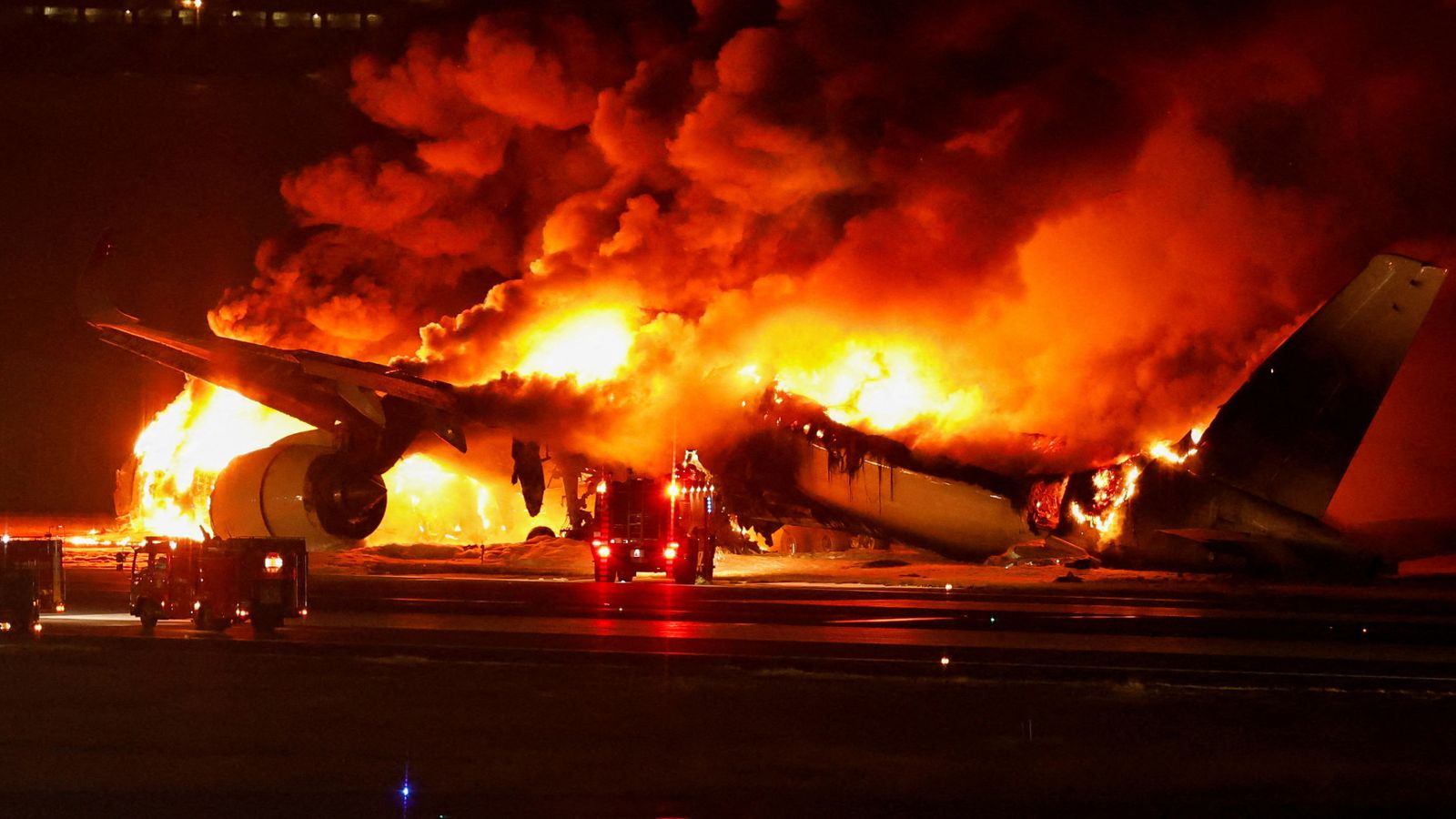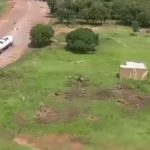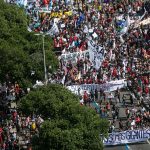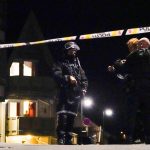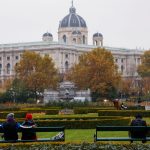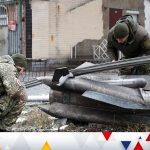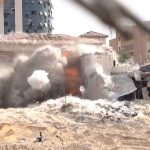Investigators behind the scenes are trying to piece together how two planes managed to collide and burst into flames – killing five people – at Tokyo’s Haneda airport.
Captured in dramatic footage from the scene, a Japan Airlines aircraft burst into flames and moved along the runway in a burning inferno following a collision with a coastguard plane.
Details have now begun to emerge with air traffic transcripts suggesting the coastguard plane had not been cleared for take-off when the crash took place.
Japan has already been hit by tragedy following an earthquake on New Year’s Day, with dozens dead and warnings of aftershocks.
Haneda is one of the busiest airports in Japan, and many people travel over the new year holiday. As details from the scene continue to emerge, here is everything we know about the plane collision so far.
Which planes were involved?
Please use Chrome browser for a more accessible video player
The domestic Japan Airlines Flight 516, an Airbus A350, had flown out of Shin Chitose airport in the northern island of Hokkaido, down to Tokyo’s Haneda airport on the main island of Honshu. It was carrying 379 people, including crew.
The collision also involved the coastguard aircraft MA722, a De Havilland Canada DHC-8-315Q MPA – also known as a Bombardier Dash-8 – which had six people including the pilot on board.
It had been preparing to fly to the port city of Niigata to deliver aid to those affected by the earthquake at the time of the collision, which took place at 5.47pm local time (8.47am in the UK).
Pilot and aviation consultant Tim Atkinson says the Bombardier Dash-8 is typically a short-haul airliner with about 50 to 80 seats. They are “not anything like the size of the A350s” but are “sizeable enough to have a significant volume of fuel on board”, he told Sky News.
The passenger plane either collided with the coastguard aircraft on the runway or taxiway after it touched down, Japan Airlines reportedly told the Kyodo news agency.
Passengers and crew
All 367 passengers and 12 crew on board the passenger flight were evacuated safely, Japan Airlines said.
The passengers included eight children, Kyodo reported.
“We have just witnessed a miracle,” former commercial pilot Roger Whitefield told Sky News, as footage from the scene played out. “The way they got all those passengers off that aeroplane is almost beyond belief.”
While the coastguard plane pilot managed to evacuate, the five other crew members were killed, public broadcaster NHK reported.
Japan’s transport minister confirmed the pilot of the coastguard plane was injured in the collision.
What caused the collision?
While the investigation has only just begun, it has been suggested that the coastguard plane is the aircraft that should not have been on the runway.
Transcripts of traffic control instructions appear to show the JAL flight had been given permission to land, while the coastguard aircraft had been told to taxi to a holding point near the runway.
In a statement on Wednesday, JAL said its aircraft recognised and repeated air traffic control’s landing permission before touching down.
However, the captain of the small aircraft said he entered the runway after receiving permission, a coastguard official said.
Mr Atkinson said a busy airport in the evening is a “very visually challenging environment” for everyone involved – from air traffic controllers to pilots and vehicle drivers – with “an awful lot of lights of various colours, some of which are flashing”.
“As one approaches a runway at night, it’s often very difficult to perceive those little signs of, for example, a relatively small aircraft,” said Mr Atkinson, who is also an air accident investigator.
Flight Radar 24, which tracks flights across the world, offered more details on the collision, saying the coastguard plane was not equipped with a modern ADS-B transponder.
ADS-B transponders are used to transmit highly accurate information about an aircraft’s position to ground controllers and directly to other aircraft, and are more accurate than using conventional radar surveillance.
What does footage show?
Local TV video showed a large eruption of fire and smoke from the side of the Japan Airlines plane as it taxied on a runway.
The area around the wing then caught fire, and footage an hour later showed the plane fully engulfed in flames.
As firefighters battled to control the blaze, the Japan Airlines aircraft appeared to break in two.
The Ministry of Land, Infrastructure, Transport and Tourism has said it is investigating the collision.
What have survivors said?
One passenger posted footage from inside the Japan Airlines aircraft as it careered down the runway. The clip then showed people being evacuated down a slide.
Please use Chrome browser for a more accessible video player
Some passengers have also spoken out following their ordeal.
William Manzione, who was on board with his wife and children, told Sky News that his family dodged a “really big bullet”.
He recalled feeling a “huge impact” before a “louder bang” as the plane bent towards its nose and cabin crew began shouting in Japanese.
It wasn’t until his family had left the aircraft that Mr Manzione realised the true extent of the crash.
Please use Chrome browser for a more accessible video player
He said: “When I got off my seat I started to see flames out the windows and then I realised this is not good.
“When I saw the inflatable slide, I understood this was bad. I took my son and we went down the slide and met with my other relatives. Then I turned around and saw the aeroplane with the nose completely smashed and the flames all over the back.
“That’s when I started to realise this is way bigger than what I felt on the touchdown. I didn’t realise there was another plane involved, I was shocked at that.”
Be the first to get Breaking News
Install the Sky News app for free
What happens next?
Operations at Haneda airport have resumed and an investigation into exactly what happened on the runway is under way.
Agencies in France, where the Airbus was built, and in the UK, where its two Rolls-Royce engines were manufactured, are assisting the Japan Safety Transport Board.
Meanwhile, Tokyo police are investigating whether professional negligence could have contributed to the crash, according to local media.
Tetsuo Saito, Japan’s transport minister, said officials are doing their best to prevent any delays to earthquake relief.
